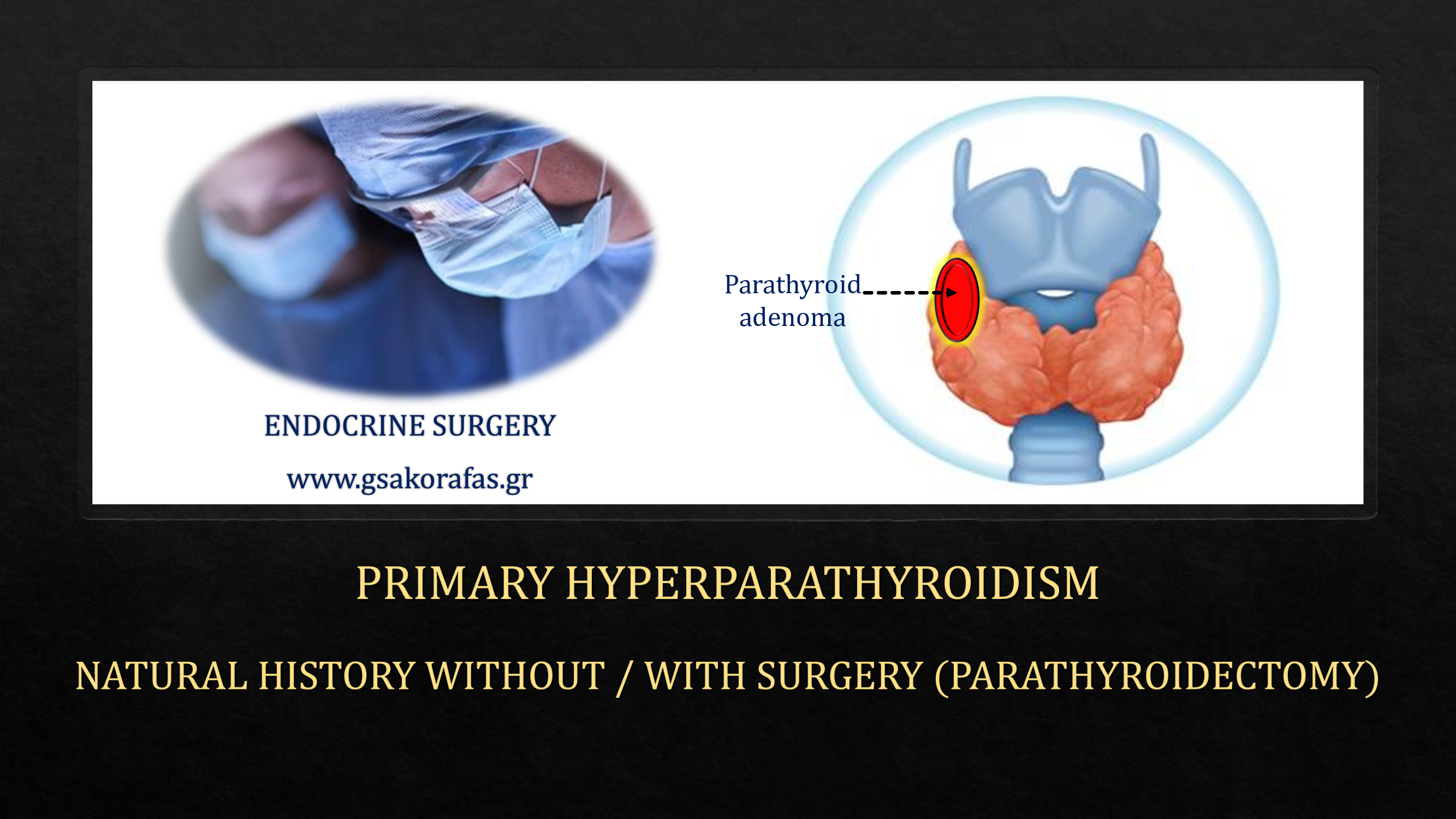Introduction
Primary hyperparathyroidism is a relatively common and increasingly diagnosed endocrinopathy. Surgery (parathyroidectomy) is the only truly curative therapeutic method. What is the impact of surgery on the natural course of the disease. Data are available for 15 years of prospective monitoring and refer mainly to the disease manifestations from the bones and the kidneys (the two main organ-targets)
BIOCHEMICAL PARAMETERS
Without surgery
- All relevant biochemical indexes remain stable
- An upward trend should be expected in the long-term (after 13 years) in the serum calcium levels.
Following successful parathyroidectomy
Biochemical indexes promptly normalize
BONE DISEASE
Without surgery
- BMD (bone mineral density) stable until year 8 from diagnosis
- Following year 8, femoral neck and distal one-third radius will decline
- These changes will be more / markedly evident after year 10.
Following successful parathyroidectomy
- BMD improves at all sites.
- BMD increases first in the lumbar spine, followed chronologically by improvements in the hip and distal one-third radius sites
- Skeletal microstructure and bone strength (as determined by HRpQCT and finite element analysis) are improved.
- In addition to improvements in BMD, fracture incidence is reduced.
- These beneficial effects of surgery (in particular increase in BMD) regarding bone disease are often observed even in NPHPT (normocalcemic primary hyperparathyroidism)
RENAL SYSTEM
Without surgery
- Creatinine and urinary calcium excretion stable over time
- Recurrence of kidney stones common
Following successful parathyroidectomy
- Reduced urinary calcium excretion
- Substantial reduction of the risk of new kidney stone formation
JCEM 2018
Ιατρικό Ψυχικού[/vc_column_text][/vc_column]
[dt_fancy_image image_id=”3771″]



